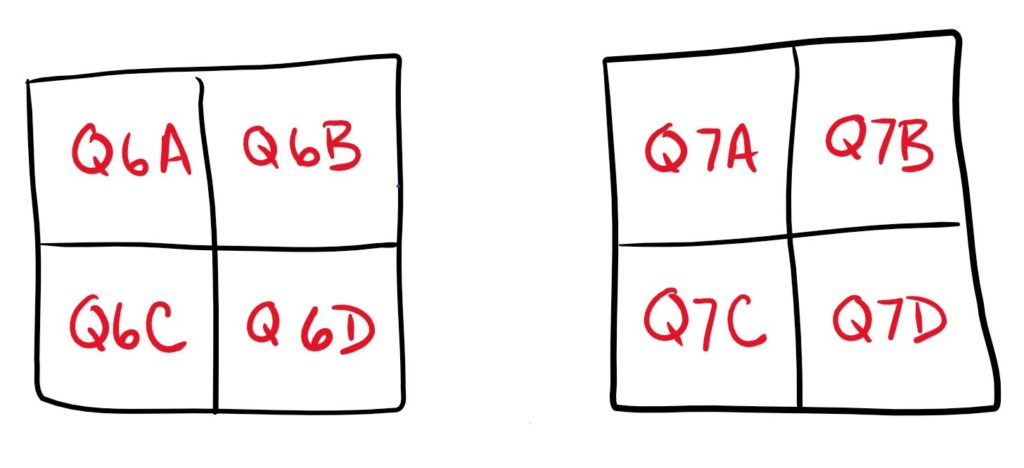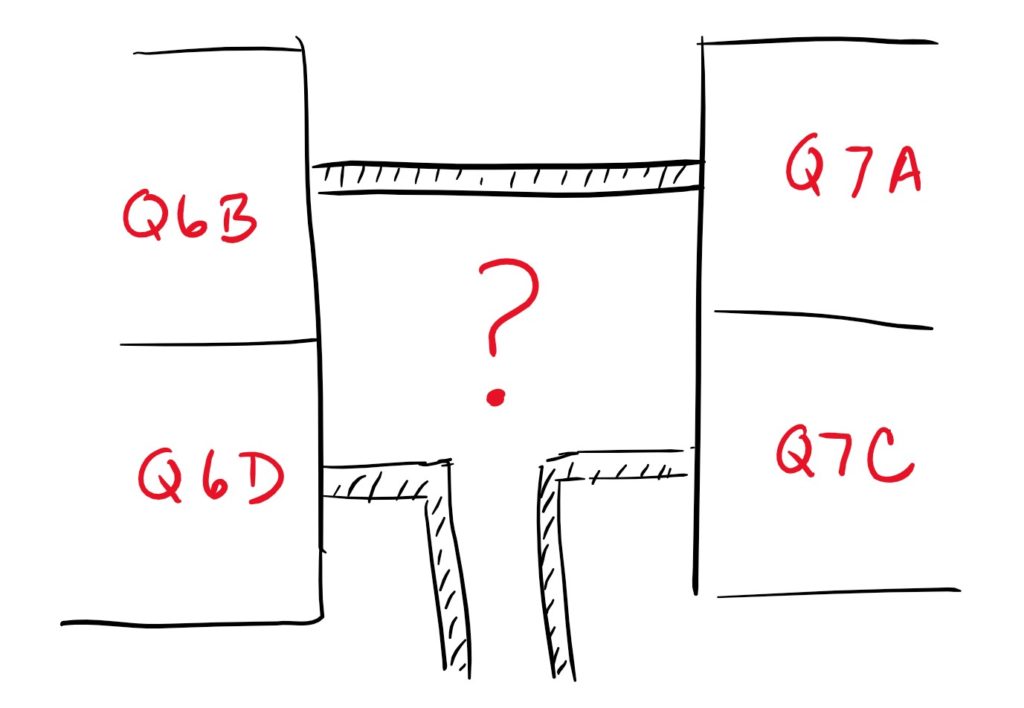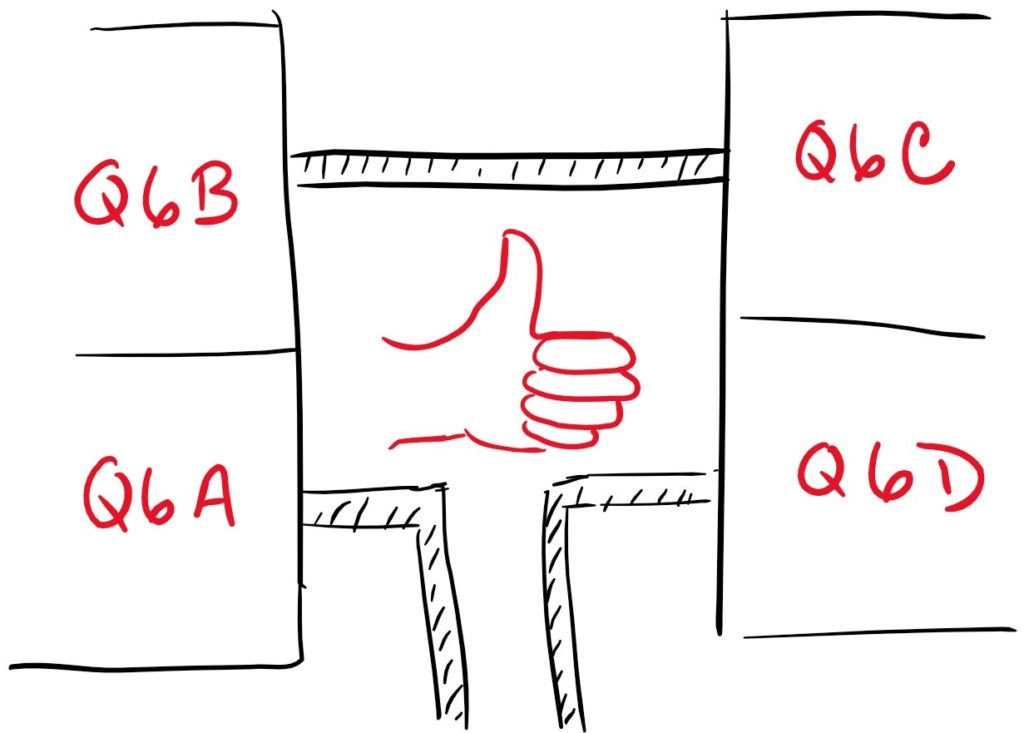I ran across a great real-life example of (non)human centered design recently, as I attended my son’s back-to-school night at our local high school. Back-to-School night is an evening when all the parents show up and navigate their way through their child’s 7-period schedule, spending approximately 10 minutes in each class. As you can imagine, it is chaos. The school is big, the parents have no idea where they are going, and the schedule is aggressive. In other words, it’s a great opportunity to observe human behavior at work!
This is a map of my son’s school.

You’ll notice at the top there are a series of “quads” – temporary structures that will house the students as the school undergoes major renovations. At first glance, this map makes perfect sense – 11 quads, with rooms labeled left to right, top to bottom – just the way I read a map.

The problem is, when I am actually navigating the school, I am not outside of it, looking in with perfect clarity. I am immersed in it. And my perspective is totally different. The buildings are accessed via walkways built between them, with four doors opening to each platform like this:

So what I experience is not a neatly ordered line of numbering, but a mix of letters and numbers in seemingly no particular order! Despite the architects best intent, my *experience* of a quad is completely different from their understanding. As I stand on that platform between buildings, I perceive a quad to be four connected doorways, despite the fact that they are part of two different buildings.
If the school was labeled based on human-centered design – not architect-centered design – it would look something like this:

Now, when I stand on the same platform, I can clearly see that I am in Quad 6 and that the room letters start on my left and progress in a clockwise direction. Got it! Not only does this give me clarity from navigation perspective, it likely has implications from a community perspective. Those four teachers who run into one another every day now have a shared identity – they are Quad 6!
So here is our challenge. At some point in our design processes, we need to step back from our expertise and ask ourselves… “What will our users will actually experience?” I have no doubt that those architects excelled at their jobs – they were thinking about safety and capacity… and electricity… and building codes… and myriad other things I can only guess at. But – they forgot their user.
As we build the organizations of the future, we need to continually be asking ourselves what our users experience. Can my employees navigate their environments with ease? Do they have the right information, at the right time? How can I make their jobs easier, faster, better? And, for extra credit: Can I build community along the way?
